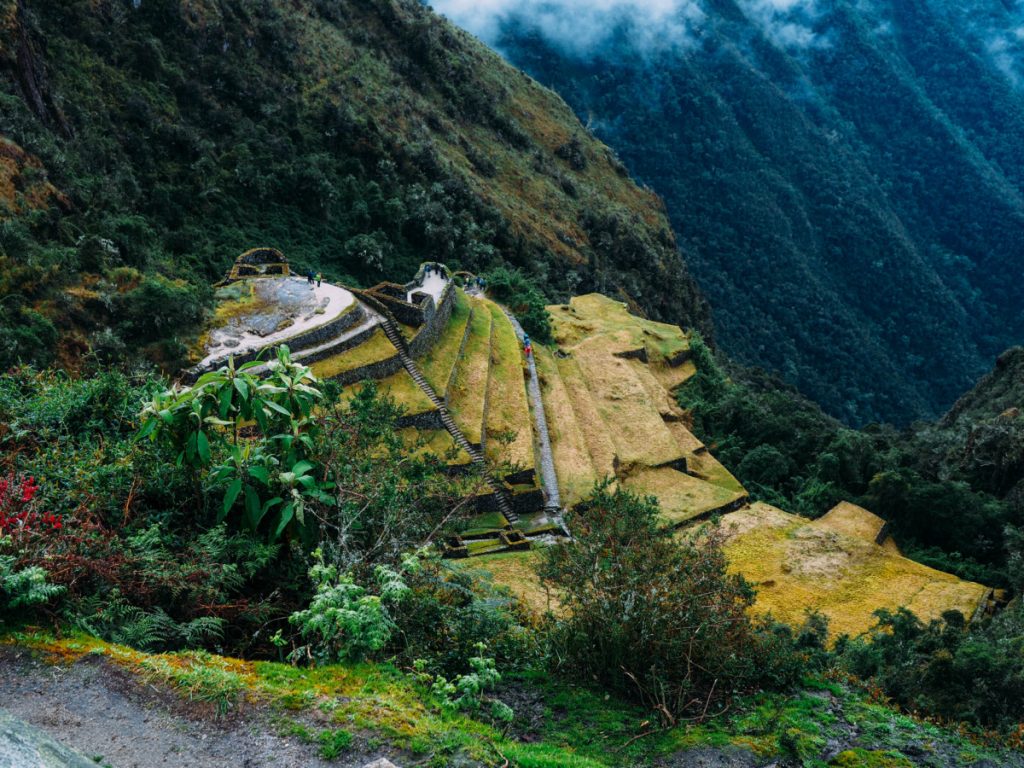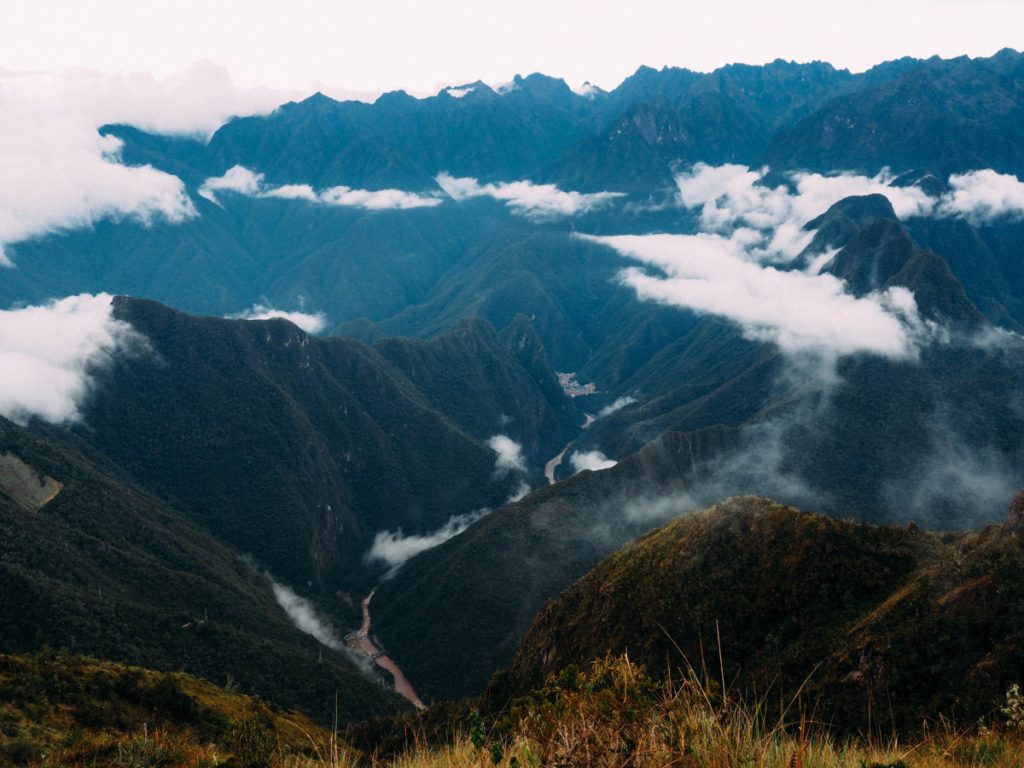Cusco & Machu Picchu
- 0 Comments
- By lucy
Mum, dad, Olivia and I were lucky enough to spend Christmas and New Years exploring Peru and Ecuador, in particular, the Inca Trail and the Galapagos Islands. It was an amazing trip and super special to be able to spend such quality time together as a family.

Our trip started off with four flights that took us Melbourne to Sydney, Sydney to Santiago, Santiago to Lima and then (finally!) Lima to Cuzco. We had stopped for a night in both Santiago and Lima to break up the travel but it was a huge relief to finally arrive at the Belmond Hotel Monasterio in Cusco. The hotel is housed in a 16th century seminary and every detail was impeccable, we particularly enjoyed having spiced hot chocolate in the courtyard one evening, sitting by a fire under the branches of the three hundred year old cedar tree that dominates the space.
In Cusco we took it relatively easy, the elevation of 3,400 m (11,150 ft) means that the air is thin and even a relatively short walk would leave us short of breath. We took the time to visit museums and malleries and to admire the colonial, Incan and pre Incan artifacts. One of the most interesting things we did was to visit the collection of Martín Chambi.
Chambi was born a Quechuan peasant and went on to become one of the first indigenous, South American photographers. He is famous for his work documenting the indigenous people of Peru, as well as his photographs of the landscapes and the ruins of a recently rediscovered Machu Picchu.




The day we left Cusco for the Sacred Valley, we started with a visit to a traditional Quechuan village. While there we were shown how the women spun, dyed and wove alpaca fleece into the brightly colored traditional garments. We also got to try traditional foods including unique varieties of maize and cuy (guinea pig). I was the only one that was game to try it, but to be honest, it tasted pretty similar to roast rabbit.






What followed was a beautiful picnic lunch before we continued on to the sacred valley.
Our afternoon started with a visit to the increadibly striking Maras salt mine. Maras has been a source of salt since pre-Incan times. Today, the high salinity spring bubbles up from underground and is then diverted by a series of channels around the pools. Every few days, the workers will lift small rocks that act as dams in order to divert water through their pools. Once filled, the rock is replaced and the water evaporates in the intense sunlight, leaving behind only salt.
We also visited the incredible Moray Incan ruins. Here a series of circular terraces descend around 30 m. The structure of the terraces forms a number of micro-climates, with temperatures varying by up to 15 °C between the top and bottom most terraces. The soil composition differs as well, with each terrace having soil sourced from a different region in the Incan empire. This, combined with he sophisticated irrigation system, suggests that Moray served as an agricultural research station for different strains of corn and potatoes. The ‘Incan Monsanto’ as our guide put it.






The next day we were up bright and early to start on the Incan Trail. Despite my phone being pick-pocketed at our brief stop in Ollantaytambo, we made it to Kilometer 81 by mid morning and set off.
The Inca Trail
I’m somewhat embarrassed to admit that the four of us had twelve porters, a chef and a guide with us. It turns out though, that having beautifully chef prepared meals makes hiking through the Peruvian mountains that much more enjoyable. On out first day we stopped for lunch at a small village part way along and then found ourselves almost too full to continue. Thankfully, as we were fast walkers, and there was no one else in our group, we were able to adjust our itinerary a bit. On the remaining days we would instead walk straight through to our final stopping place for the day, arriving by 1 or 2 pm and then have our lunch there. The rest of the afternoon we could play cards and relax, leaving us fresh for an early start the next day. This saved us from attempting to hike on a full stomach, and also meant that our porters only had to set up camp once per day and that our legs had plenty of time to recover in between.





Our first day was relatively easy, 11 km with only ~300 m elevation gain. We passed a lot of Incan ruins, both on the trail and in the valley below us and we walked through a number of small settlements. While tourists are no longer allowed to use horses or donkeys as pack animals, there is no such restriction on those who live along the trail. At one point a man went past us driving six or eight donkeys in front of him, loaded onto their backs were the supplies for a new tin roof, certainly a sight to see!
On the second day we were woken up with a cup of coffee or a coca tea and a beautiful breakfast spread. We were going to need the fuel as the second day was when it started getting really tough, 11.5 km from our camp at Wayllabamba to our next camp at Pacaymayu. In between however was a 1,270 m elevation gain up to Dead Woman Pass at 4,200 m and then a steep descent to our camp back at 3580 m. When Olivia and I arrived we had clear views back down the valley we had just come up, but by the time mum and dad caught us the fog was already rolling in.



We enjoyed our snacks at the pass and then did the final part of the day all together. The valley we were descending into was beautiful. The original Inca trail that we were walking on was beautifully preserved, wild lupines grew everywhere and we were lucky enough to spot a humming bird as we made out way into camp.



Day three was probably the most magical for me. We woke up to the most fantastic view out of our tent and the walking that day took us past numerous Incan ruins, many of which we had to ourselves. By this point there were no more towns along the way so it was just us and the mountains. We made very good time to our next campsite at Phuyupatamarca and just as we got inside out tent for lunch the rain started coming down.








By early afternoon the rain had cleared and I asked our guide if there was anything worth wandering to nearby. He pointed us towards a small, nearby peak which had served as an alter for the Incan site we would walk through the following morning. It only took around fifteen minutes to reach the peak but the last few meters felt more akin to rock climbing than hiking. I can honestly say that this might have been one of my favorite moments of the hike.

Phuyupatamarca sits high in the Andean cloud forest and clouds would regularly roll through, dropping viability from kilometers down to barely a meter, but when the clouds parted there was the most fantastic 360° view with glaciers at eye level in the distance, Incan ruins below, and to the North, Machu Picchu mountain and below it the winding Urubamba river and gorge. The Incan sight itself was a relatively small alter, whose shape echoed the surrounding mountains, but that view was to die for.




We woke before the sun the next morning, with the hope of catching sunrise hitting Salcantay and then Machu Picchu mountain but unfortunatly the clouds didn’t cooperate. It made me thankful we hadn’t tried for the infamous sunrise from the sun-gate. It would have meant hiking further yesterday (and missing out on the opportunity to see the view from the shrine) and a much earlier start all for no reward.

This was our final days hiking and it took us from 3650 m down to Machu Picchu at 2400 m. We passed through a number of other sites on our way and really took our time to explore them properly. Each one seemed a little bigger and more impressive than the last until we finally arrived at the sun gate where we could enjoy the stunning view out over Machu Picchu.


Today we weren’t exploring Machu Picchu and so headed straight down the mountain for a much needed shower and bed.
The next day was our tour of the site and an opportunity to climb Huayna Picchu (which translates as ‘young peak’ to Machu Picchu’s ‘old peak’). It was a very steep climb in parts but it was a far better view of Machu Picchu than the sun gate had been. I would wholeheartedly recommend this to anyone who visits!










The next day was our train back to Cusco and then a flight to Lima, concluding our time at altitude. The hike was everything I’d hoped it would be and I was delighted to be able to cross it off my bucket list. Maybe at some point I’ll return and carry all my gear myself, but for now I’m just happy to have conquered it.
Comments